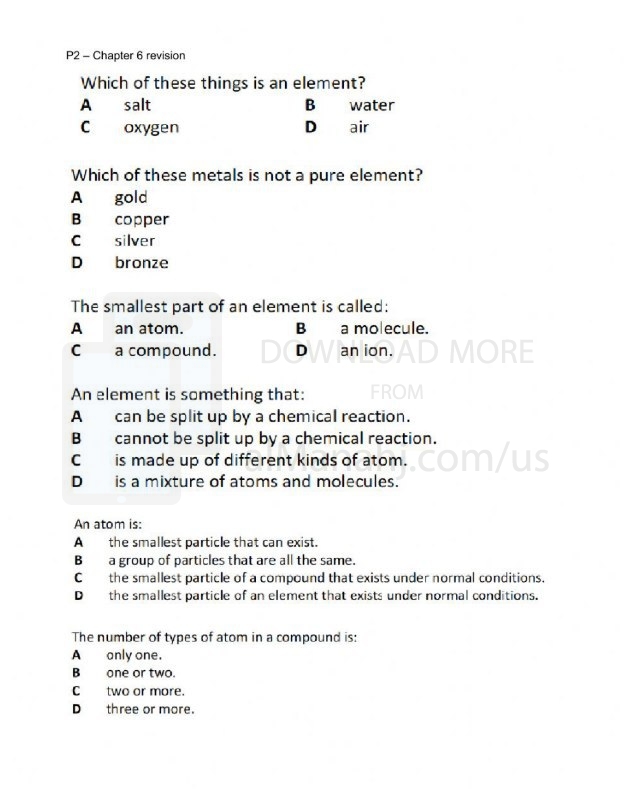| You are here: Almanahj Website ⇒ American curriculum ⇒ 6th Grade ⇒ Chemistry ⇒ Term 1 | ||
|---|---|---|
Worksheet about Elements and separating mixture | ||
|---|---|---|
| Subject: Chemistry | ||
| 6th Grade | ||
| Term 1 | ||
| Year: 2023/2024 | ||
| Size: 829.1KB | ||
| Number of clicks: 127 | ||
| Publish date:November 06, 2023 | ||
| Added by: Eman | ||
| Last download date: 2024-08-29 17:14:24 | ||
| Updated by: Eman9966 on 2023-11-06 13:40:08 | By: theodor Vino92TSA | |
| File info: Elements: In chemistry, an element is a substance that consists of only one type of atom. Elements are the building blocks of matter and cannot be further broken down into simpler substances by chemical means. Each element is uniquely characterized by its atomic number, which corresponds to the number of protons in the nucleus of its atoms. There are currently 118 known elements, including familiar ones like hydrogen, oxygen, carbon, and gold. Elements are organized in the periodic table based on their atomic number and shared properties. They can be classified into different categories, such as metals, nonmetals, and metalloids, based on their physical and chemical properties. Elements combine to form compounds through chemical reactions and interactions. Understanding the properties and behavior of elements is crucial in many fields, including materials science, medicine, and environmental studies. Separating Mixtures: Mixtures are combinations of two or more substances that are physically combined and can be separated through various methods. Separating mixtures is an important aspect of chemistry, as it allows us to isolate and analyze different components of a mixture. Here are some common methods for separating mixtures:1. Filtration: Filtration is a method used to separate solid particles from a liquid or gas by passing the mixture through a filter medium. The filter traps the solid particles, allowing the liquid or gas to pass through. 2. Distillation: Distillation is a process used to separate a mixture of liquids based on their boiling points. The mixture is heated, and the component with the lower boiling point vaporizes first. The vapor is then condensed and collected, resulting in the separation of the components. 3. Evaporation: Evaporation involves the separation of a solvent from a solution by heating the mixture. The solvent evaporates, leaving behind the solute as a solid residue. 4. Chromatography: Chromatography is a technique used to separate components of a mixture based on their different affinities for a stationary phase and a mobile phase. The mixture is applied to a stationary phase, and the mobile phase carries the components at different rates, resulting in their separation. 5. Magnetic Separation: Magnetic separation is used to separate magnetic materials from non-magnetic ones. A magnet is used to attract and separate the magnetic particles from the rest of the mixture. 6. Centrifugation: Centrifugation involves spinning a mixture at high speeds to separate components based on their density. The denser components move towards the bottom of the container, while the less dense components remain closer to the top. These are just a few examples of methods used to separate mixtures in chemistry. The choice of method depends on the nature of the mixture and the properties of its components. Separating mixtures allows scientists to study and utilize the individual components for various purposes. | ||
| Downloading link Worksheet about Elements and separating mixture |
|---|
|
1699273060.pdf
The file is being prepared for download
|
| File images |
|---|
 |